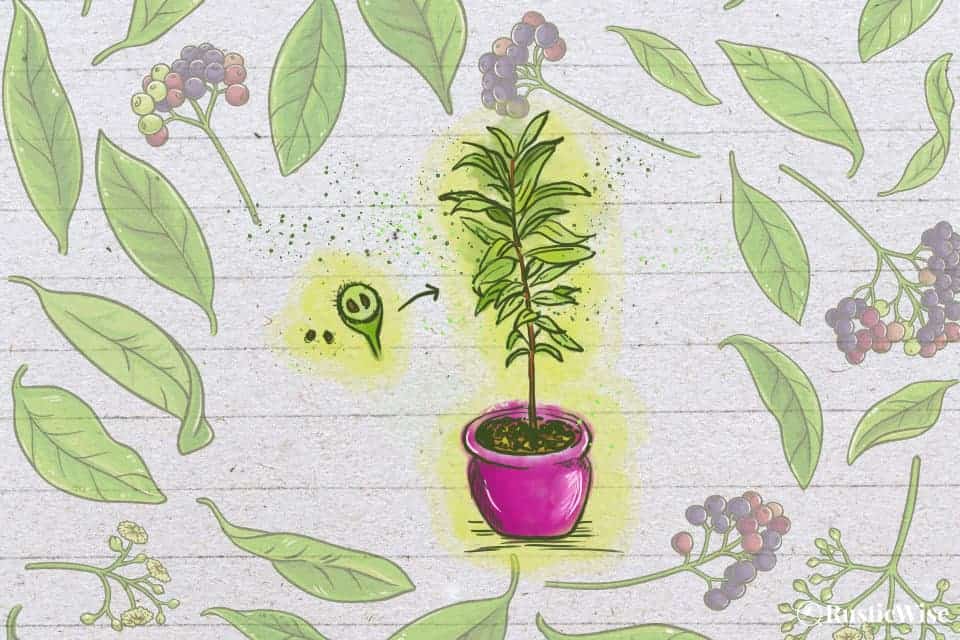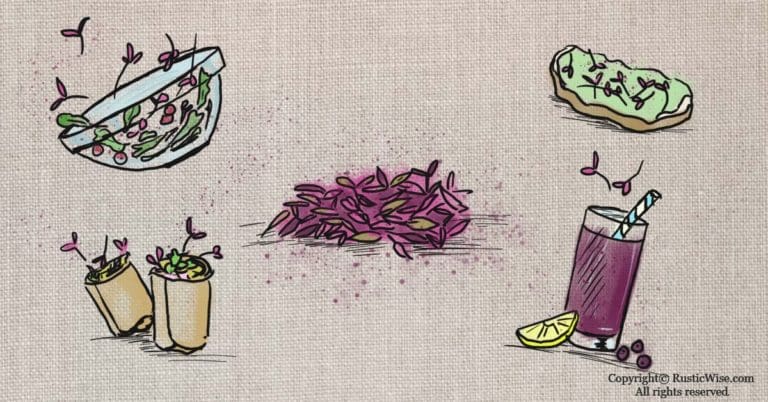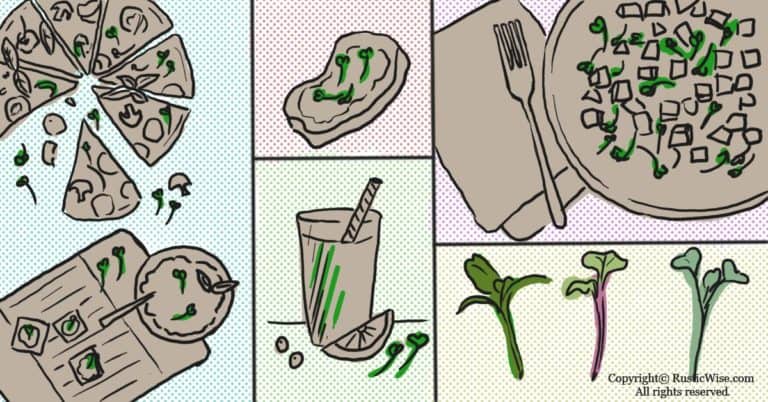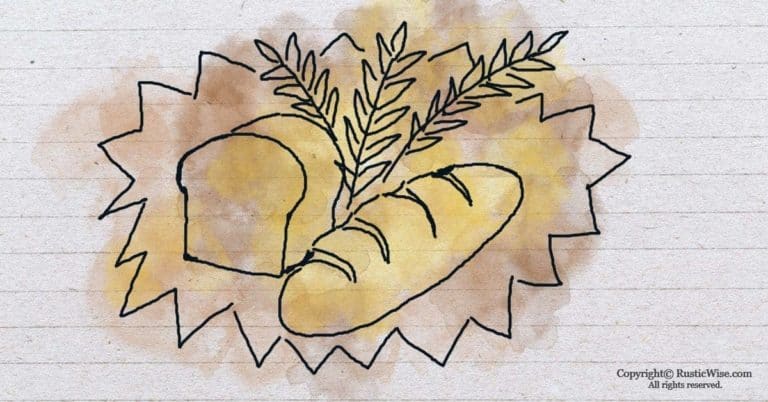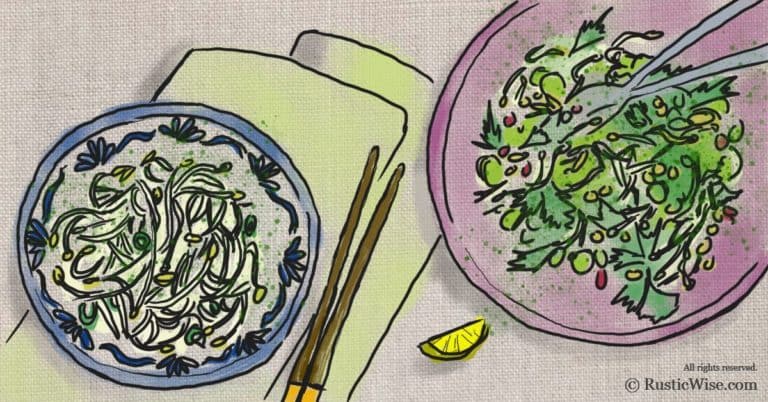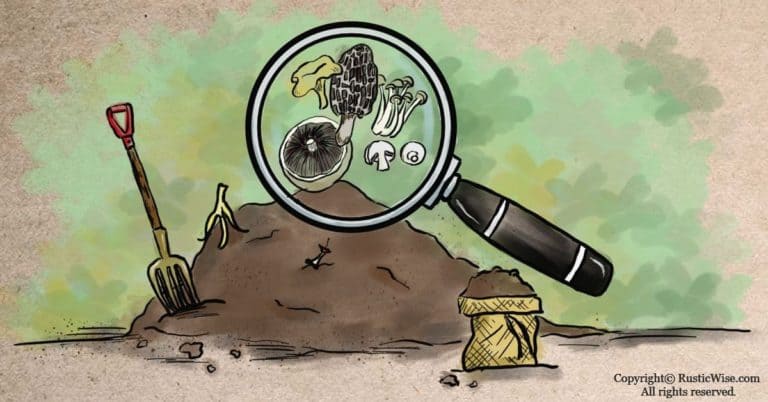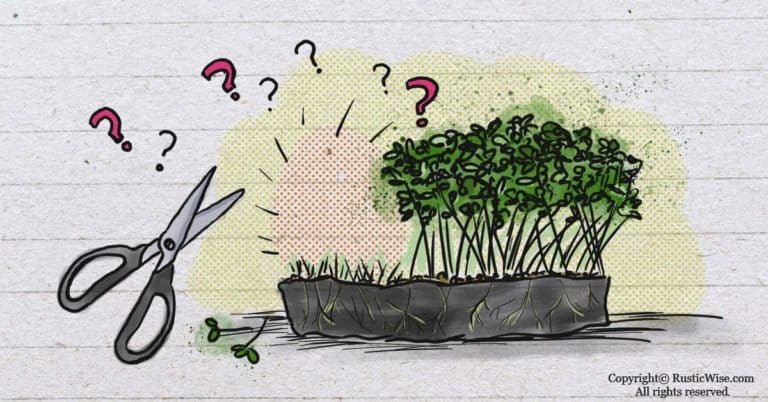How To Grow Allspice From Seed for Your Culinary Creations
If you love the aroma and flavor of allspice (sweet, earthy, with a dash of pepper), nothing beats gathering your own fresh berries and grinding your own spices!
Allspice comes from the dried berries of the Pimenta dioica evergreen tree, also known as the pimento plant. If you live in a warm climate, we’ll show you how to grow allspice from seed. The allspice tree prefers full sun, well-draining soil, and does well in USDA zones 10–12.
If you live in a colder climate, you can keep your tree indoors in a container over the winter, or in a greenhouse. Let’s look at the best way to grow your own pimento tree, plus ways to use the berries and leaves in your culinary creations.

Credit: Biodiversity Heritage Library / Flickr
Allspice: an aromatic plant and culinary powerhouse
True allspice comes from the dried berries of an evergreen pimento tree belonging to the Pimenta officinalis family. The main cultivar is Pimenta dioica, which grows in moderate climates.
The name “allspice” is often confused for a blend of different spices. In reality, this tiny berry from the P. dioica tropical evergreen tree imparts a rich and multi-dimensional flavor that invokes cinnamon, cloves, nutmeg, with peppery undertones all-in-one!
Other common names for this warm and aromatic spice include Jamaican pepper, Myrtle pepper (as it belongs to the Myrtle or Myrtaceae family), newspice, and pimento/pimenta. This allspice tree is also called the pimento tree.
This versatile spice complements both sweet and savory dishes. It’s a staple in Caribbean cuisine (think Jerk chicken and curries). The whole berries are also popular in pickling brines.
Allspice can be used whole, or ground into a fine powder.
How tall do allspice plants get?
The allspice evergreen shrub can reach heights of 40 feet (12 meters). It has oblong, leathery leaves that have an enticing aroma and flavor useful for cooking. Trees in bloom produce clusters of small white flowers.¹
The tree typically begins producing fruit when it’s between 3 and 6 years old. It will continue to produce fruit under the right conditions for roughly 50 years.²
Pimento trees produce small green fruits (drupes). Each fruit contains two seeds. Fruits are harvested while still green. When dried, they turn brown and look similar to peppercorns.
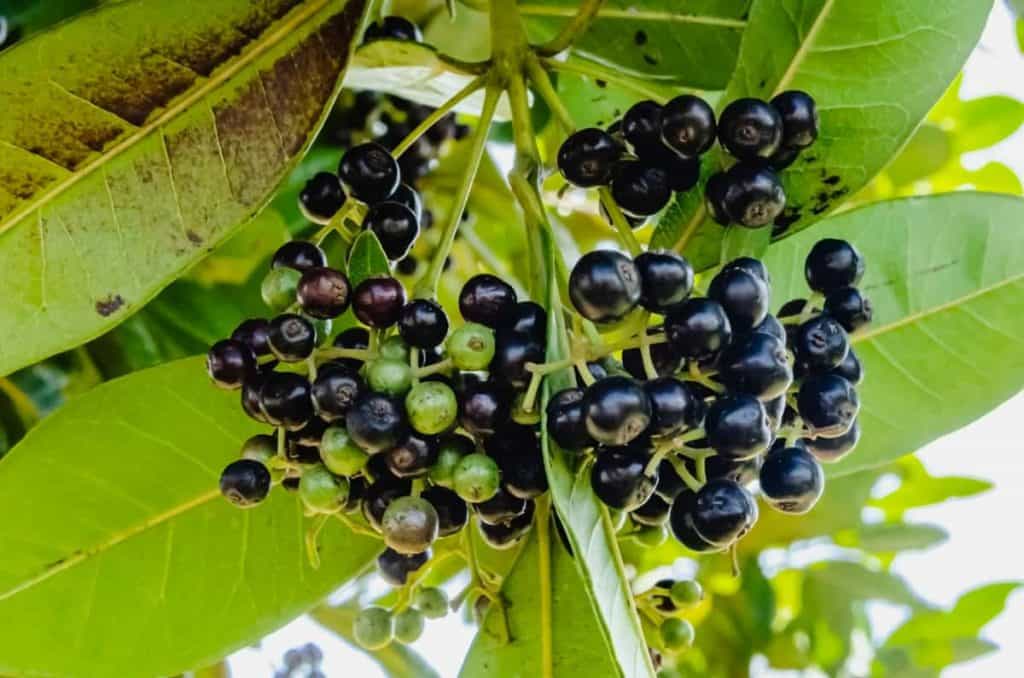
A growing caveat you should know
Unless you live in a tropical climate (or one that closely mimics this tropical evergreen’s native habitat), your tree likely won’t produce fruit.
Allspice plants are dioecious, which means they have different male and female plants. To produce fruit, a female plant will require a male pollinator. (In rare situations, some male plants may have hermaphroditic flowers that produce fruits.)¹
So, if you were really looking forward to growing your own garden-fresh spices, it might not happen. However, you can use the leaves of the pimento plant like bay leaves in cooking.
This tropical evergreen tree is also quite striking in its own right—even if it doesn’t produce allspice berries or flowers. The leaves are glossy, attractive, and aromatic. Plus, they’re handy as a seasoning for your culinary creations. (More on this below!)
Where do pimento trees grow natively?
Pimento trees (P. dioica) grow in tropical areas of Central America and the West Indies. This includes Guatemala, Honduras, Jamaica, and Mexico.³
Some Pimenta dioica trees have become naturalized in parts of Hawaii, including Maui, Kaua’i, and O’ahu. Birds eat the fruit and they spread the seeds about in this manner.⁴
Other “allspice” plants
There are other allspice plants that differ from true allspice and grow in different regions. Don’t confuse these with pimento.
- Carolina allspice (Calycanthus floridus): Also known as Eastern sweetshrub, this plant’s native range includes south-eastern parts of North America. The bark is dried and used as a cinnamon substitute.³
- Californian allspice (Calycanthus occidentalis): Also called Western sweetshrub, this deciduous shrub is found in south-western parts of North America. The dried bark is also dried and sometimes used as a cinnamon or allspice substitute.
- Wild allspice or spicebush (Lindera benzoin): You’ll find this plant in the eastern regions of North America.³ You can brew the leaves, twigs and fruit to make a fragrant tea. When foraging for food, please take care to properly identify the plant before using.
- Japanese allspice (Chimonanthus praecox): This aromatic shrub grows natively in eastern Asia. The flowers are often used in teas.³
Allspice uses
While the dried berries are highly coveted for their rich flavor profile and aroma, the leaves are no slouch either. Here’s how to put the berries and leaves to good use in the kitchen.
How to use allspice berries
You can use allspice berries ground or whole.
Whole allspice for cooking is preferable as it has a longer shelf life. They may keep up to 2 years if stored properly in an airtight container away from direct light and heat.
Ground allspice, on the other hand, is best used with 6 months. (If you have your own allspice plant, pick and dry the berries; freshly grind just before using.)
- Ground allspice: This robust seasoning has many uses. Add it to your baking recipe for a sweet and savory flavor. Use it as a pumpkin spice substitute. Sprinkle it atop hot beverages such as hot chocolate, cider, or teas. Make a DIY spice rub.
- Whole allspice berries: Whole berries slowly release their flavor when heated. Add to the beginning of cook time to maximize the warming flavor and aroma. You can add whole allspice to soups, stews, and as part of a spice rub for meat, poultry, and fish. It also pairs well with cabbage and tomato dishes. Or, use these berries to brew a cup of tea!
How to use allspice leaves
Pimento leaves quickly lose their potency after harvesting, and are best used fresh. So it’s handy to have this aromatic shrub close by; you can harvest fresh leaves as needed.
Allspice tree leaves can be used like bay leaves. They impart fragrance and an earthy, herby flavor to savory dishes such as soups and stews. Don’t forget to remove before serving!
In traditional Jamaican cooking, allspice tree leaves are placed under grilled or smoked meat to enhance the flavors of the dish. You can also brew tea with allspice leaves.
Allspice growing conditions
Now let’s get straight to how to grow allspice from seed. Here are some quick growing conditions to get started. Trying to mimic the warm and humid tropical and sub-tropical conditions of its natural habitat will ensure your allspice sapling grows healthy and strong.
- Soil: Allspice trees are not too picky about their soil and can spread freely under the right conditions. They prefer well-draining soil. A decent quality peaty potting mix soil works well.
- Light conditions: Full sun is preferred.
- Germination: Sowed seeds will germinate in roughly 15 days.⁵
- Water and humidity: This plant likes humid climates. If you live in a drier region, your plant may do well in a greenhouse. The plant has medium watering requirements. If it’s kept humid, water when dry.
- Hardiness: P. dioica is suited for USDA zones 10 through 12. Pimento plants do not like frost. If temperatures dip below 28 degrees Fahrenheit (-2 degrees Celisius), the plants will be damaged. If you live in a cooler climate, it’s best to overwinter plants indoors.¹
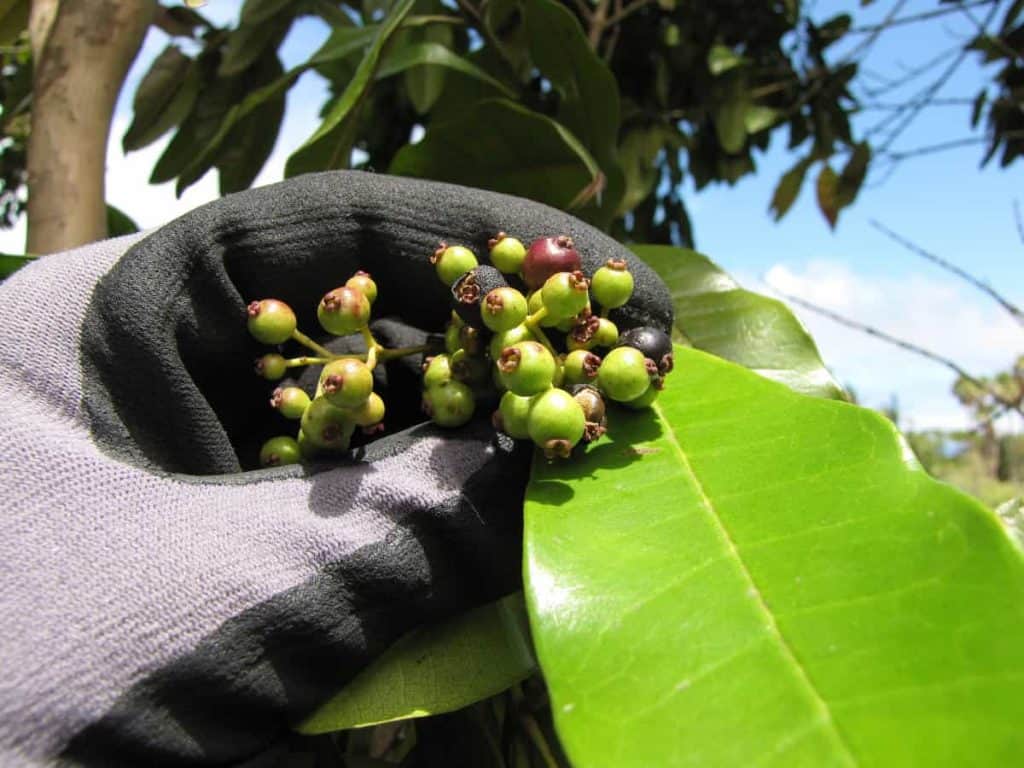
How to grow allspice from seed
You might find some allspice seeds from specialty seed suppliers, but it’s best to collect seeds from vibrant, fruit-bearing trees. Harvested fruit seeds quickly lose their viability.
This slow growing plant is well worth the wait with its aromatic leaves and berries.
Or, you can buy a small sapling if you find a greenhouse or nursery that sells the pimento tree.
Step 1: Collect fruits and soak to remove seeds
Collect the ripened fruits from healthy and high yielding pimento trees. Soak the fruits in clean, lukewarm water overnight. This makes the seeds easier to remove by softening the outer hard seed coat.
The next day, the seeds can be easily removed from the fruit flesh. Each fruit contains two seeds. Rinse clean in a colander.
Let seeds fully air dry in a shady area.
Step 2: Sow seeds
Prepare the potting soil mixture. Soil should be well-draining with some compost, or a bit of sand incorporated.
If you live in a warm climate, you can sow the seeds directly outside in the spring. Select a sunny area.
Otherwise, you can start seeds indoors in starter pots with drainage holes. Make a small indent in the soil for each seed. Loosely cover with compost. Water until the soil is moistened.
Step 3: Apply mulch
Apply a thin layer of natural mulch to speed up germination. A few good choices include leaf compost, or shredded natural papers.
If starting indoors, keep the seeds warm in a bright room that receives bright indirect light.
Keep seeds moist.
Seeds will germinate in about 15 days.
That’s it! Once your allspice sapling becomes established, it becomes more drought-resistant and is fairly easy to care for.
Allspice is a popular plant to grow as it’s low maintenance with few pests or diseases to worry about.
Other allspice care tips
- Don’t allow your allspice pimenta tree to experience frost. Bring indoors when temperatures drop. Allspice shrubs make good indoor container plants (provided they have plenty of sunshine), or patio plants.
- You can transplant your seedlings outdoors once they are around 9–10 months old, or roughly 10–12 inches (25–30 centimeters) tall.
- On mature trees, you can also start new trees through clonal propagation or air layering in the spring.
- If growing outdoors, space trees roughly 20 feet apart (6 meters).
- Apply a balanced fertilizer about ever 6 months.
- If you’re growing many allspice trees, keep a male to female ratio of 1:10 if possible to encourage pollination.⁵
How to harvest and dry allspice berries
Once your tree produces green berries, get ready to harvest them!
When the tiny green fruits are about 1/4 inch in width, they can be harvested. Pick branchlets with plenty of green berries. Strip the berries from the branch.
Place them onto a screen or baking sheet to sun-dry for about a week.
When sundried, they turn brown in color and shrink in size.
Store your whole allspice fruits in airtight containers away from direct sunlight and heat.
Related questions
Can you grow allspice from dried berries?
If you have a package of store-bought whole allspice, you might be tempted to crack open the berries and plant the seeds. Don’t waste your time.
Most seeds will lose their viability quickly. There’s little chance of the seeds from store-bought spices germinating. It’s best to plant seeds from freshly harvested berries.
How long does it take to grow allspice?
Mature plants may produce flowers after 3 years (if clonally propagated). Seed propagated plants may produce flowers in 6 years.
Are allspice leaves edible?
While allspice leaves are edible, they are typically used to season savory dishes. Similar to bay leaves, they are added to soups and stews at the beginning of the cook time, then removed before serving.
Would you like more timeless tips via email?
Fun tips to help you live an independent, self-sustaining lifestyle. Opt-out at any time.


References
- Missouri Botanical Garden, Pimenta dioica, https://www.missouribotanicalgarden.org/PlantFinder/PlantFinderDetails.aspx?taxonid=282860. Accessed July 2022.
- Emery, Carla (2012). The Encyclopedia of Country Living, 40th Anniversary Edition. Sasquatch Books. pp.391. ISBN-13: 978-1-57061-840-6.
- Britannica, Allspice, https://www.britannica.com/plant/allspice. Accessed July 2022.
- United States Geological Survey, Biological Resources Division, Pimenta dioica, http://citeseerx.ist.psu.edu/viewdoc/download?doi=10.1.1.606.6316&rep=rep1&type=pdf. Accessed July 2022.
- Horticultural College and Research Institute, Tamil Nadu Agricultural University, Allspice Plant, https://agritech.tnau.ac.in/horticulture/horti_spice%20crops_allspice.html. Accessed July 2022.

Author: Josh Tesolin
Josh is co-founder of RusticWise. When he’s not tinkering in the garden, or fixing something around the house, you can find him working on a vast array of random side projects.

